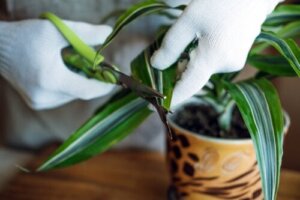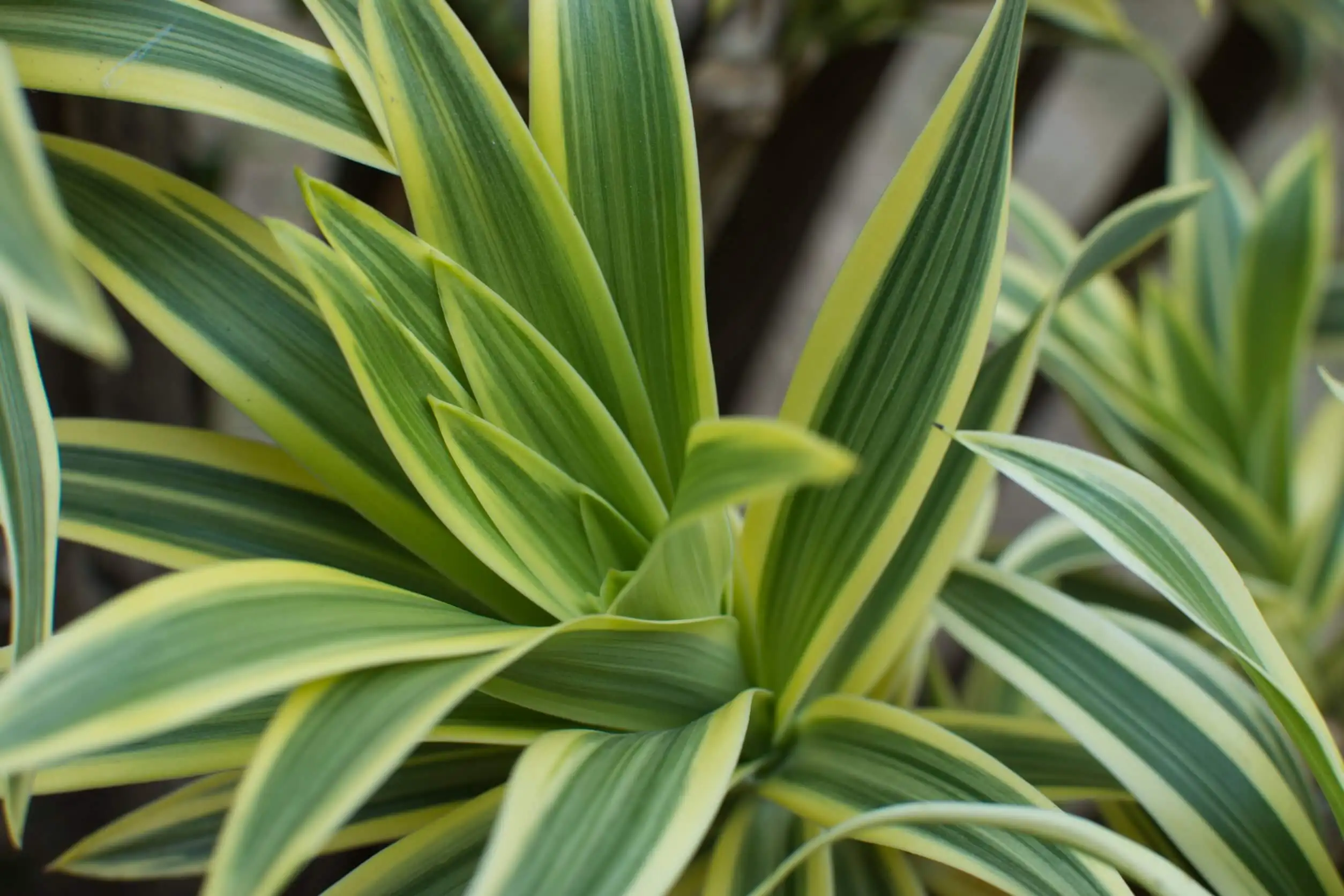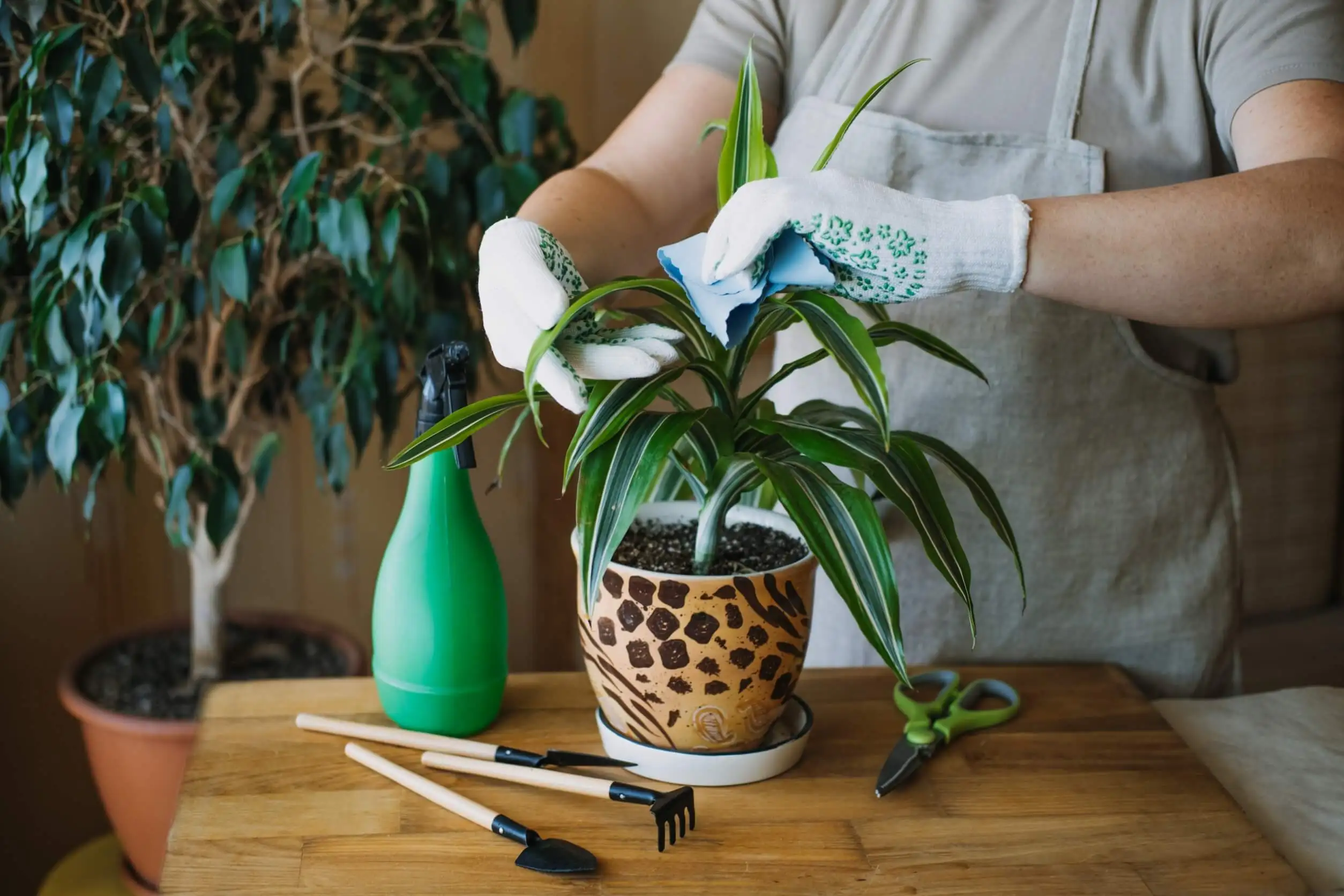The Happiness Plant: Characteristics and Care

The “happiness plant” is a great indoor plant. It’s often chosen for decoration because of its beauty and easy maintenance. In addition, it’s attributed to some excellent health advantages related to the purification of the environment and its ability to enhance emotional tranquility.
Its easy adaptation is another reason why many people enjoy this plant, along with the tropical aspect that gives it the intense green of its leaves with subtle yellowish notes and a thick trunk in a chestnut tone. It’s believed that this planet is even lucky for those who possess it. Let’s learn more about it.
The “Happiness plant”: Mystical and beneficial for health

The plant in question is linked to feng shui and prosperity. The Architectural Digest magazine highlights that this shrub supposedly attracts good luck in business, moving, and new projects; it may also influence a pleasant mood and serene behavior.
In terms of health, the happiness plant is credited with the ability to detoxify the air inside a house. This is because, in general, plants absorb carbon dioxide, release oxygen, and regulate humidity in a cost-effective and sustainable way, according to EcoHabitar magazine.
They also counteract pollutants emanating from substances used in the home, such as cleaners, paints, and cigarette smoke, for example.
And if that weren’t enough, the benefits of these plants are even linked to headache relief and more pleasant rest. On the subject, the Center for Health Sciences Research and Development notes that unhealthy ventilation in bedrooms increases sleep disorders and causes snoring; to solve these problems, clean the air with a plant!
“Palo de Brasil”, “palo de agua”, “tronco de Brasil” and “tronco de la felicidad” are all names of this species whose botanical name is Dracaena fragrans Massangeana.
Characteristics of the “happiness plant”
This plant is native to the African tropics, distinguished by its woody appearance, perennial, and with a light brown stem that textures a series of horizontal rings.
The broad leaves are similar to the tip of a spear, but with a slight outward curvature. Flowering is by clusters and happens a maximum of a couple of times a year; experts suggest pruning the flowers as soon as they fade so that this condition does not harm the plant. Let’s take a look at some of the unique characteristics of this plant:
- Adaptability: This plant adapts to tropical temperatures and fits indoors as well as in a garden or patio.
- Easy maintenance: It’s not complicated to take care of it; you just need to ensure watering with the precaution of not flooding the pot.
- Height: The trunk of these specimens rises up to 6 meters when you plant them properly in the ground. Inside the house, the height can reach around 2 meters.
- Toxicity: There are no negative effects on humans. However, people with sensitive skin and allergies should avoid contact with the plant, anticipating a possible reaction. As for pets, place the plant in a place where they cannot bite the leaves since the plants defends itself from bacteria and fungi through its saponins, an irritating compound for the digestive system of animals.
We think you may also enjoy reading this article: How to Make a Moss Guide or Support for Climbing Plants
How to take care of the “happiness plant”?
Taking care of the plant is simple, as the care is mostly focused on protecting it from common pests and fungi due to over-watering and over-supplying. Let’s take a look at how to take care of it.

Illumination and temperature
The “happiness plant” requires sunlight, but not direct exposure. As InfoAgro magazine reviews, chronic radiation alters the development and genetic structure of plants.
In that order, temperatures suitable for these specimens should not fall below 10 degrees Celsius. Also, you should not place the plant near radiators, as sudden thermal changes can affect it.
Watering
When watering, let the water fall as rain would. Regulate hydration in the winter, carrying it out when the soil is dry. In summer, the plant needs daily hydration, without overdoing it so as not to choke the roots and spoil the shrub.
Feeding
Mineral fertilizer is appropriate for this plant, especially if the plant is in a pot. When the plant is attached to the ground, it doesn’t require fertilizers or fertilizers different from the rest of the vegetation.
Keeping the plant bright
With its lovely green color, this plant communicates that it’s in good health. If you notice any dullness, wipe the leaves with a cotton ball moistened with water.
When the pigmentation is in other tones, this is a sign that the specimen is affected. As a result of too much light, the leaves replace their light yellow flashes with a more intense coloration of this range. A change of location is a good way to save it.
Pruning and transplanting
The leaves should not be pruned frequently; when you do prune, cut only at the top, especially if there’s evidence of damage. To reproduce it, it’s pertinent to extract a shoot from the trunk and place it in an individual pot, waiting for the roots to grow.
On the other hand, transplanting is recommended every 2 years if the size of the plant exceeds the dimensions of the planter. Experts advise doing it in the autumn or the spring.
Like this article? You may also like to read: We Recommend 6 Succulent Plants to Decorate Your Home
How to cure the “happiness plant” if it gets sick
This type of plant can be infected by pests such as mealy bugs and aphids. To rescue them, a foolproof remedy is to clean the trunk with a balanced mixture of neutral soap and water.
If the shrub suffers from leaf drop and leaf growth is hindered, then it needs fertilizer. Consult a gardening service provider for a favorable composition.
All cited sources were thoroughly reviewed by our team to ensure their quality, reliability, currency, and validity. The bibliography of this article was considered reliable and of academic or scientific accuracy.
- Contaminación del aire relacionada con la respiración alterada del sueño (SDB). Centro de Investigación y Desarrollo en Ciencias de la Salud. Universidad Autónoma de Nuevo León. México; 2019. http://cidics.uanl.mx/nota-100/
- Dracaena Fragrans Massangeana. Guía Verde. España. https://www.guiaverde.com/guia-de-plantas/dracaena-fragrans–massangeana–583/
- Las plantas correctas para reducir la contaminación interior y ahorrar energía. EcoHabitar. España. https://ecohabitar.org/usar-las-plantas-correctas-puede-reducir-la-contaminacion-interior-y-ahorrar-energia/
- Los efectos de la radiación solar en las plantas. Info Agro. México; 2018. https://mexico.infoagro.com/los-efectos-de-la-radiacion-solar-en-las-plantas/
- Ochoa A. Todo lo que debes saber sobre el palo de Brasil y cómo cuidarlo. Architectural Digest. 2022. https://www.admagazine.com/editors-pick/palo-de-brasil-todo-lo-que-debes-saber-y-como-cuidarlo-20201102-7543-articulos#:~:text=El%20palo%20de%20Brasil%20es%20conocido%20como%20el%20tronco%20de,serenidad%20y%20el%20buen%20humor
- Palo de Brasil. Picture This. Enciclopedia de plantas. https://www.picturethisai.com/es/wiki/Dracaena_fragrans.html#:~:text=Toxicidad,que%20puede%20provocar%20reacciones%20al%C3%A9rgicas.
This text is provided for informational purposes only and does not replace consultation with a professional. If in doubt, consult your specialist.








